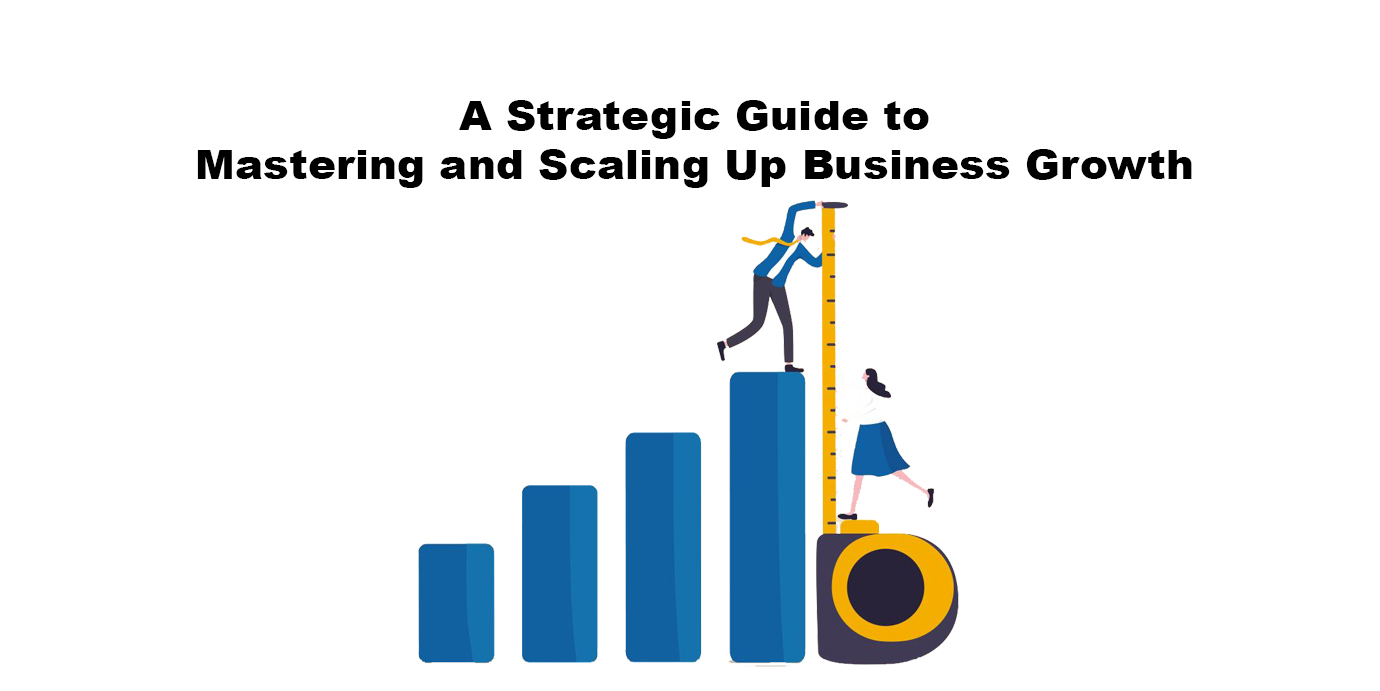Certainly, you are not the only one who is thinking of scaling your business. Entrepreneurs are always looking for ways to grow their businesses. With so many options available, how do you know which is the right one for your business? Scaling a business is about making intelligent choices based on the past experience and new opportunities that have arisen over time.
Every Microsoft Company once began as a mere business idea but dedicatedly scaled by an enthusiastic entrepreneur. Of course, certain factors play a vital role in how those organizations grew and tasted success — things like striking the iron when it is hot, having an effective team in place, sheer focus, and needless to mention days and nights of continuous hard work – all count in.
What is Scaling a Business?
Scalability is a characteristic that describes the capability of a business to perform well under an expanding workload. Scaling in business mainly depends on two factors: capability and capacity. Consider these questions for reflection: Is your business capable enough to grow? Does it have the capacity to accommodate growth? What if a mere confusion becomes the reason for your business to stumble?
Orders falling, miscommunication, insufficient staff, these reasons will leave you with nothing but unhappy customers.
In business, scalability describes the ability of the business to grow without being hampered by the available resources when production increases. Technology has allowed the idea of scalability to become more convenient in recent years as it has made acquiring customers, expanding markets and scaling the business much easier.
However, many entrepreneurs often confuse themselves as if they are unable to identify the difference between growth and scaling. Permit us to offer an elucidation.
Scaling Vs. Growth
To keep things simple, growth refers to an increase in revenue whereas scaling refers to the increase in revenue without increasing the costs of production.
For instance, let’s say you’re a service-based agency that has partnered with a new client. Now, with an increased production requirement, you might have to hire another resource as the new client will bring in more revenue for your business – that’s growth.
However, if your current team is able to deliver all the production requirements of your new client without the need of an additional resource, that’s called scaling a business.
Now, let us delve into methods to scale your business footprint without escalating your existing expenditures.
1. Understanding Your Business Model
Before scaling, ensure that your business model is robust and adaptable. It is important to recognize the telltale signs, such as heightened demand, enhanced profitability, and market opportunities, that signify the opportune moment for scaling. Undertaking expansion without a clear comprehension of the underlying reasons can lead to confusion and missteps.
2. Networking and Collaboration
Developing a strong PR network is the key to success in the long run. You should build a network of collaborations with people and organizations, for instance, service providers, sales partners, suppliers as well as customers as they may be willing to assist you by providing important market statistics. Such engagements may take the form of a formal alliance and when that happens, scalability becomes achievable with minimum effort.
3. Leveraging Technology and Automation
Technology serves as an accelerator for your scaling pursuits by investing in scalable technologies, systems and infrastructure that can handle increased demand. This includes upgrading software, implementing automation, form customer relationship to supply chain management. Thus, ensuring your operations can handle growth without major bottlenecks.
4. Establishing Standardized and Automation of Processes
Automating Manual tasks allows you to run repeatable processes smoothly at a lower cost and more efficiently. It further reduces the risk of human error as well as saves a lot of time.
In addition to automating tasks, standardizing your business using technology and documenting a clear set of instructions for specific tasks will make the scaling process much smoother.
For example, you can automate your welcome process while on boarding a customer after they register with your business. Once a customer signs up for your product or service, you can send them a simple welcome email in order to build a healthy relationship from the start.
5. Identify Your A-Team, or Strategically Outsource
When it comes to scaling your business, it’s important to identify the right time to hire more team members or simply outsource the tasks to a third-party organization or freelancers. For instance, during the initial stages of a business, you have a few members in your core team who multitask. However, as the business continues to grow, it hires experts in order to improve and streamline processes so that the core team can work on scaling the business while sustaining quality. In addition, cultivate a workplace culture that nurtures innovation, encourages collaboration, and embraces adaptability.
6. Customer- Centric Approach
Retaining existing customers is as crucial as acquiring new ones. Focus on delivering exceptional customer experiences to foster loyalty and advocacy. Leverage feedback to continually improve your product or services.
7. Focus on Increasing Your Sales
Increasing sales is a top priority for any business looking for scale. Scaling sales can either mean adding new customers or growing the average revenue from the current customers. Having an effective sales strategy is significant, and in order to achieve measurable success you must also take a look at the end-to-end sales.
8. Financing Your Growth
Scaling often demands financial resources. For this reason, you should evaluate different funding options at your disposal, including attracting investors, taking out loans, or relying on bootstrapping. Each financing path has its own set of merits and demerits; your choice should align with your business’s financial strategy.
9. Boost Marketing
Promote your brand and products efficiently. In order to make the most of your marketing budget, create tailored marketing campaigns designed to resonate with your target audience. The effectiveness of branding lies in its ability to understand your target audience and craft a message that fosters recognition and trust.
10. Identify your competitive edge
When it comes to identifying a competitive edge, it’s important to note that a lot of entrepreneurs give in to self-perceptions of where they want their business to go. As businesses scale, they begin to understand their market and products better.
To provide a case in point.. A computer store owner at some point will figure out that he is better at providing after sales services rather than setting up or importing hardware. The store owner will then focus on maintaining staff and specialize in all sorts of tools required to provide after sales services instead of products.
Conclusion:
Scaling a business truly begins from its ideation stage. You need a distinct vision of where you envision your business a decade from now. With the light at the end of the tunnel, everything will connect and scaling your business won’t be as stressful as you might’ve thought.
Implementing these strategies effectively will certainly help your business to flourish and grow in the right direction.
Needless to mention, each entrepreneur is confronted with a myriad of challenges during their journey, however it’s prudent to implement precautionary measures. With appropriate planning, right team members and a mindset to advance forward, you will scale your business with little to no trouble at all.





